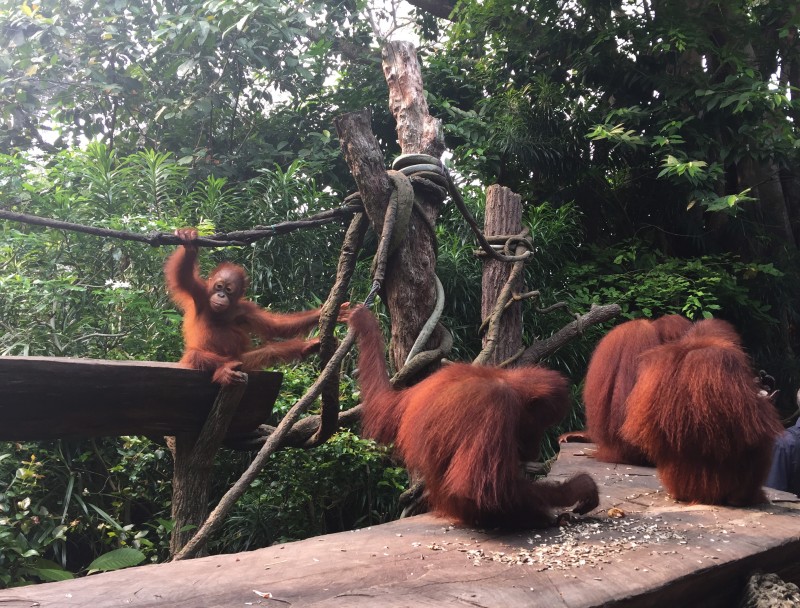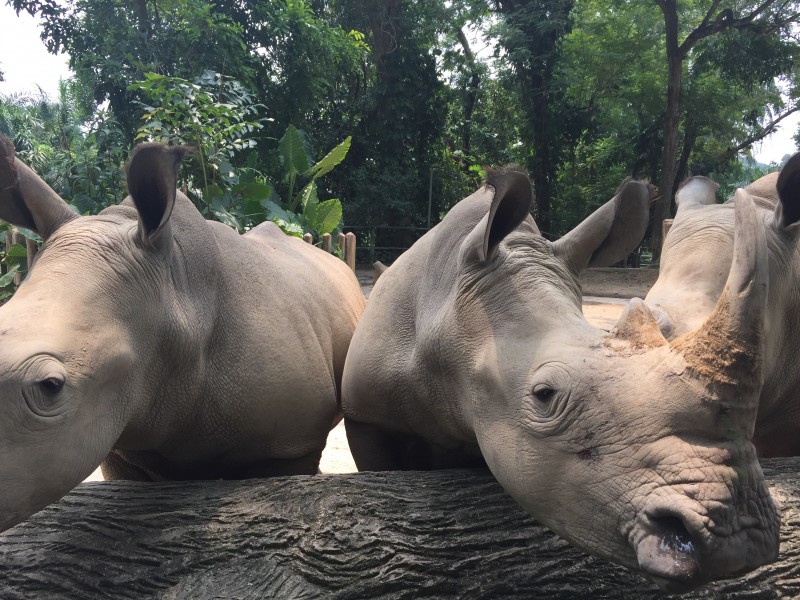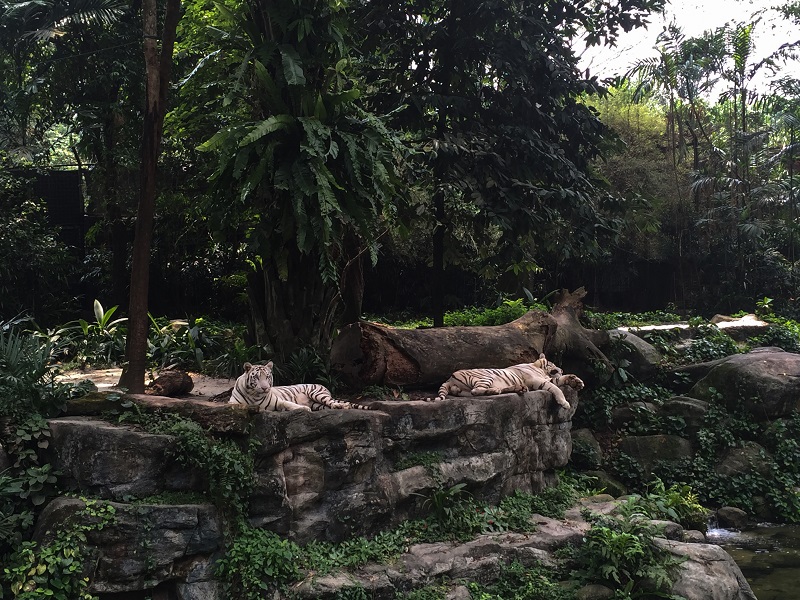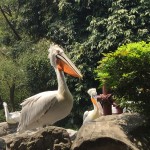Singapore’s Wildlife Attractions Part 2: The Singapore Zoo
White tigers, pygmy hippos and more!
by Jozza Alegre Palaganas | January 06, 2016
Tucked away from the Singapore’s bustling business district and mainstream tourist attractions are four wildlife parks—Singapore Zoo, River Safari, Jurong Bird Park and Night Safari.
These parks operate under Wildlife Reserves Singapore, a self-funded organization dedicated to conservation, research and educating people of all ages about animals and their habitats. They proudly house and breed around 16,300 animals across a total of 93.2 hectares.
The WindowSeat.ph team recently flew to Singapore for a visit to the parks and here’s the second part of that adventure. (For part 1, head over to this link.)
PART 2: Singapore Zoo
The 26-hectare park has been around for 40 years. It’s home to over 2,800 animals belonging to more than 300 species, of which 26 percent are threatened—and they’re free to roam around their open and natural habitats.
The park has been known to be one of the most beautiful settings in the world, it’s been named Best Leisure Attraction by the Singapore Tourism Awards nine times in the last 30 years.
The zoo is also a huge proponent of contributing to global conservation efforts through captive breeding. They bred over 100 animals—most of them threatened or endangered—in 2014.

They have the world’s first zoo-based free-ranging orang utan habitat. The orang utan is the zoo’s flagship species, with the late Ah Meng as the poster girl. She was so popular that she became the country’s tourism icon.

The park pays homage to her through the Ah Meng Restaurant, where Ah Meng’s daughters and grandkids hang out for a few minutes over lunch.

The park has a large collection of primates. This is Suzy, and she’s a brown-headed spider monkey. Typically found in northwestern Ecuador, the brown-headed spider monkey is a subspecies of the black-headed species. They’re critically endangered.

In the zoo’s take on the Great Rift Valley of Ethiopia, you’ll see banded mongoose, impressively-horned Nubian ibex, and almost a hundred (scary) Hamadryas baboons. In this habitat, the baboons showcase their daily activities—from fertile females exhibiting their very pinks, very swollen behinds, to dominant males violently (and melodramatically) drawing and protecting their territories, to little ones eating ticks off each other’s fur (and behinds), to the introverts that would rather quietly swim in the watering hole than get involved

In Wild Africa, you can observe, feed and even pet giraffes and white rhinos. The white rhino is the second-largest land mammal in the world. But the size is deceiving because they can run up to 50 kph. These creatures are near-threatened because of habitat loss and being hunted for their horns. But, according to the UK-based organization Save the Rhino, there are now 20,405 southern white rhinos from around 50 in the late ’90s.

Speaking of white, you cannot—should not—miss the white tigers. They will mostly lie around and yawn like domesticated cats—except the average domestic cat is the size of the front leg of the average white tiger—but their majestic beauty is enough to behold.

The zoo’s Elephants of Asia exhibit features educational materials on elephants and a show, Elephants at Work & Play, that demonstrates the beautiful animal’s unique strength, balance, and their relationship with their mahout.

Pygmy hippos are a rare species. They’re endangered, too, with only about 3,000 in the wild. The zoo is currently working on breeding their pygmy hippo and they borrowed a mate from a zoo in Prague.

Inuka the polar bear is one of the most popular animals in the Singapore Zoo. Born in Singapore 25 years ago, he’s the first of his species to come from the tropics.
The zoo’s interactive Frozen Tundra exhibit allows you to get up close and personal with Inuka, you can watch him feed, swim and stand in awe of how huge polar bears are. Inuka’s 8.2 feet long from nose to tail and he weighs a whopping 581 kilograms (or 1.28 tons!).
Have you been to Singapore Zoo? Share you experiences in the comments!









